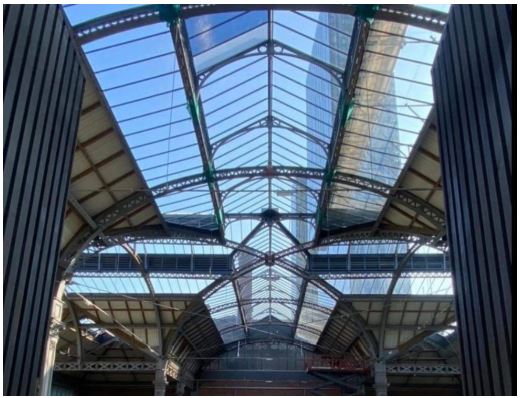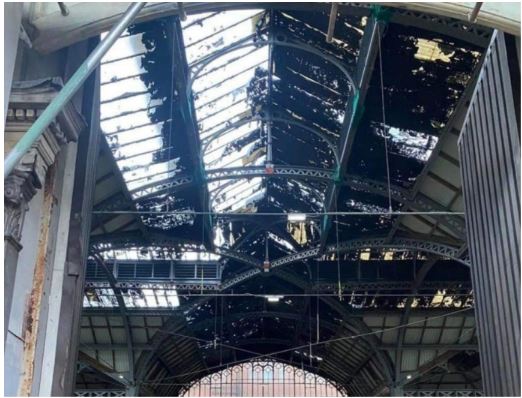Overview
Lower Campfield is a significant historical structure in Manchester, originally constructed in the late 19th century
as part of the city’s industrial expansion. The building, now used for a mix of commercial and cultural purposes, features
distinctive architectural elements, including decorative timber verticals and a tiled roof. During a routine inspection, it was
discovered that some of the tiles contained asbestos, and the timber elements had deteriorated due to age and exposure to
the elements.
NSS had the delicate task of replacing asbestos tiles, restoring glazing and restoring the timber vertical décor on Lower
Campfield, a Grade II listed building in Manchester. The project required a careful balance between modern safety standards
and the preservation of the building’s historical character.
Challenge
The presence of asbestos in the roofing tiles posed significant health and safety risks, requiring specialised removal and
disposal procedures. Ensuring the safety of workers, building occupants, and the public was paramount.
The timber vertical décor was an integral part of the building’s historic facade. Any replacement or restoration work had to retain
the original appearance and materials as closely as possible.
Solution
After a thorough assessment, fibre cement tiles were used to replace the existing asbestos tiles, new glazing panels were
supplied to ensure natural daylight now comes into the building and rotten or damaged timber was replaced throughout and
decorated to provide a clean and aesthetically pleasing finish.
A phased installation was planned to minimise disruption, the use of full perimeter boarded scaffolding was installed to provide
safe access to the working area.
The project was completed successfully, with the asbestos tiles replaced, glazing panels replaced and the timber vertical décor
fully restored. The building’s historic character was preserved, and its structural integrity improved. The careful attention to
detail ensured that the restored elements were indistinguishable from the originals, maintaining the architectural heritage of
Lower Campfield.
The collaboration between the project team, conservation officers, and specialist contractors resulted in a restoration
that not only met modern safety and environmental standards but also respected the building’s historical significance. Lower
Campfield continues to stand as a prominent example of Manchester’s rich industrial heritage, now safer and more
resilient for future generations.
Services included;
Before & After
.
.


